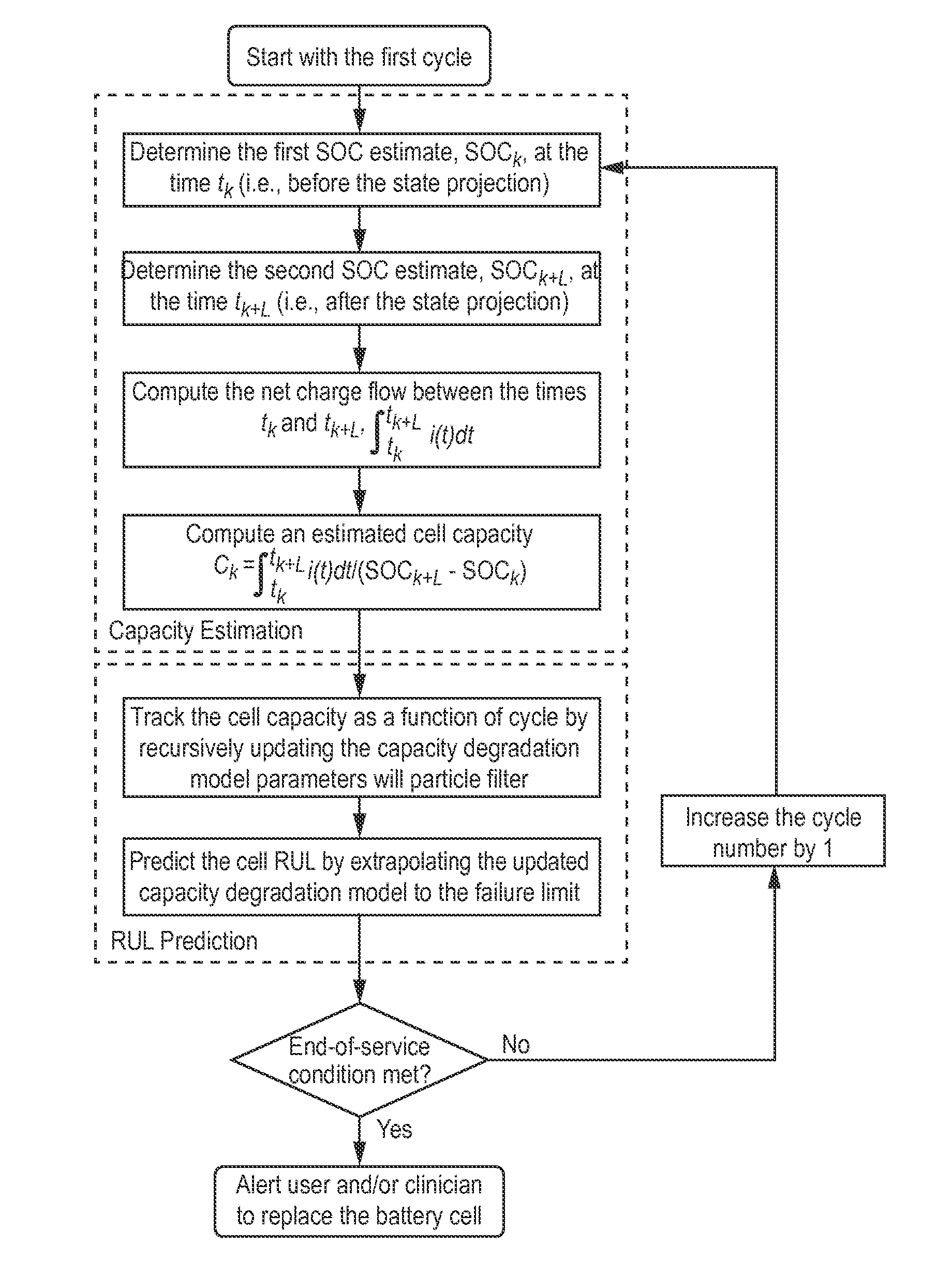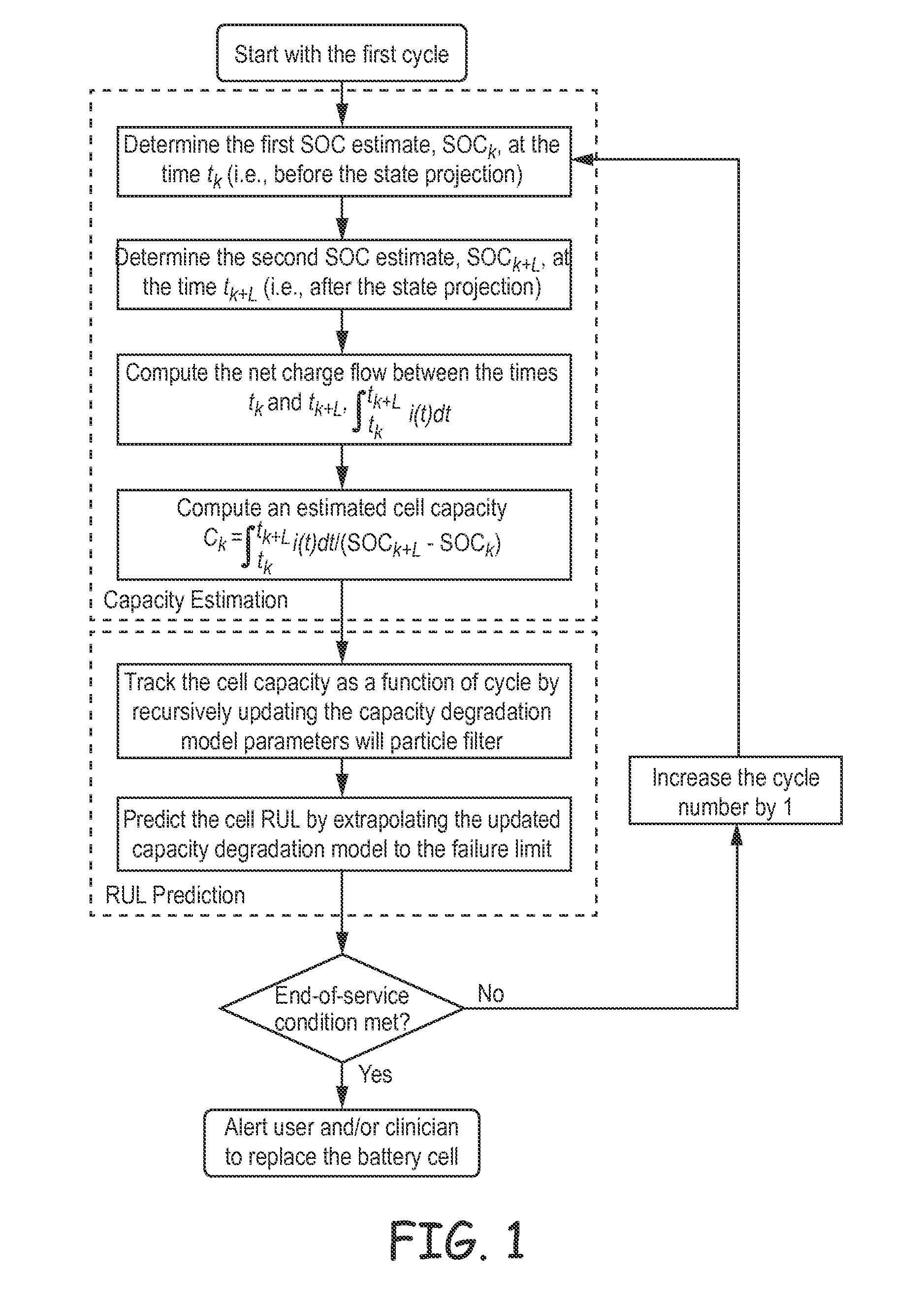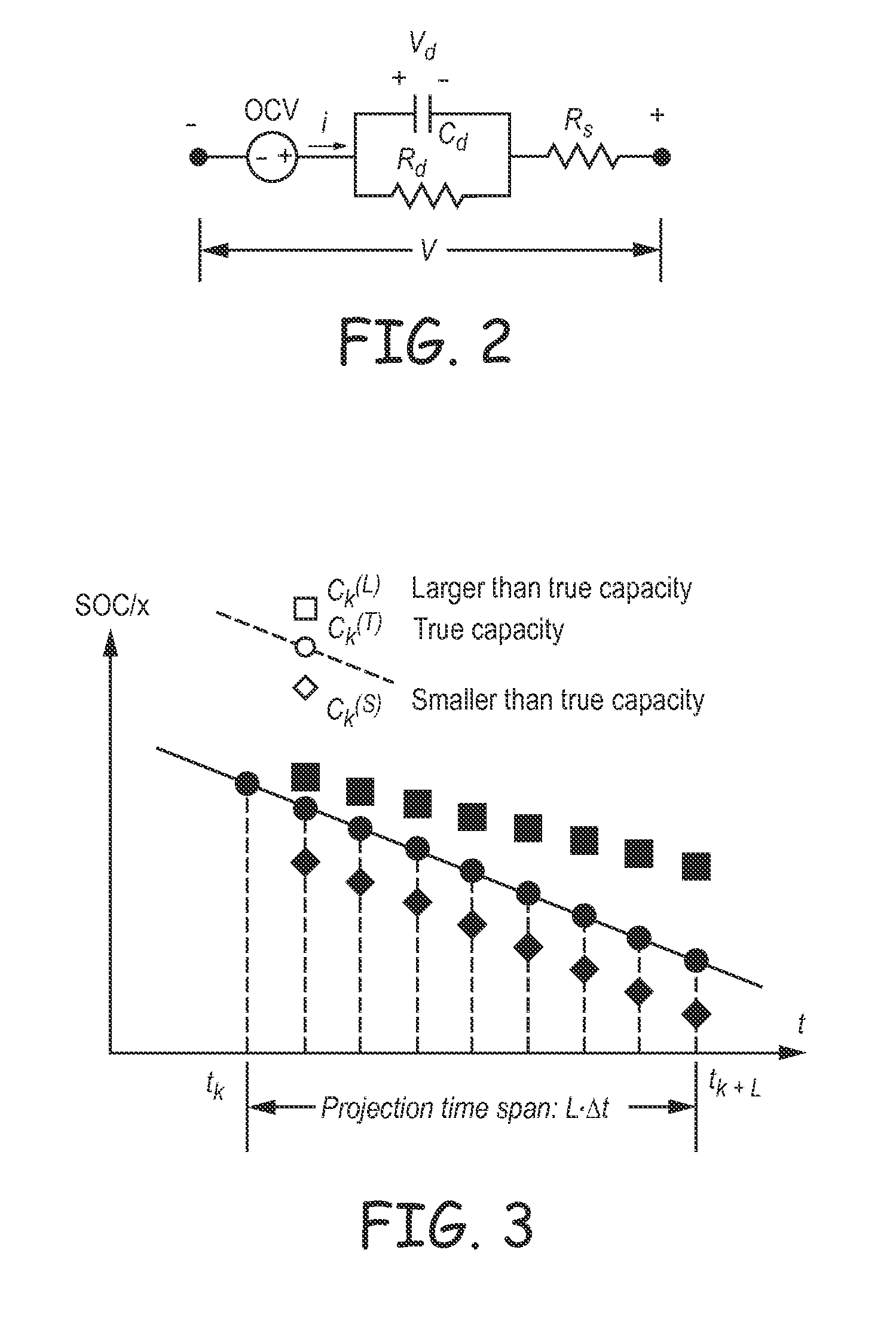Method and System for Predicting Useful Life of a Rechargeable Battery
a rechargeable battery and capacity estimation technology, applied in the direction of batteries, nickel accumulators, instruments, etc., can solve the problems of reducing the capacity of an aged cell directly limiting the electrical performance through energy loss, and not suitable for implantable medical device applications
- Summary
- Abstract
- Description
- Claims
- Application Information
AI Technical Summary
Benefits of technology
Problems solved by technology
Method used
Image
Examples
working example
Test Procedure and Cycling Data
[0103]Li-ion cells are constructed in hermetically sealed prismatic cases between 2002 and 2012 and subjected to full depth of discharge cycling with a nominal weekly discharge rate (C / 168 discharge) under 37° C. The weekly rate discharge capacities are plotted against the time on test in FIG. 4. It can be observed that the eight cells that started the cycling test in 2002 still have around 80% of the initial capacity remaining after 10 years of continuous cycling. The cycling data from these cells will be used to verify the effectiveness of the proposed method in the capacity estimation and RUL prediction.
[0104]The voltage curve evolution from one cell is graphically plotted against the normalized discharge capacity (relative to the initial discharge capacity) and the depth of discharge (DOD or 1−SOC) in FIG. 5A and FIG. 5B, respectively. It can be observed from FIG. 5A that the voltage versus discharge capacity curves shrink to the left due to the ca...
PUM
 Login to View More
Login to View More Abstract
Description
Claims
Application Information
 Login to View More
Login to View More - R&D
- Intellectual Property
- Life Sciences
- Materials
- Tech Scout
- Unparalleled Data Quality
- Higher Quality Content
- 60% Fewer Hallucinations
Browse by: Latest US Patents, China's latest patents, Technical Efficacy Thesaurus, Application Domain, Technology Topic, Popular Technical Reports.
© 2025 PatSnap. All rights reserved.Legal|Privacy policy|Modern Slavery Act Transparency Statement|Sitemap|About US| Contact US: help@patsnap.com



